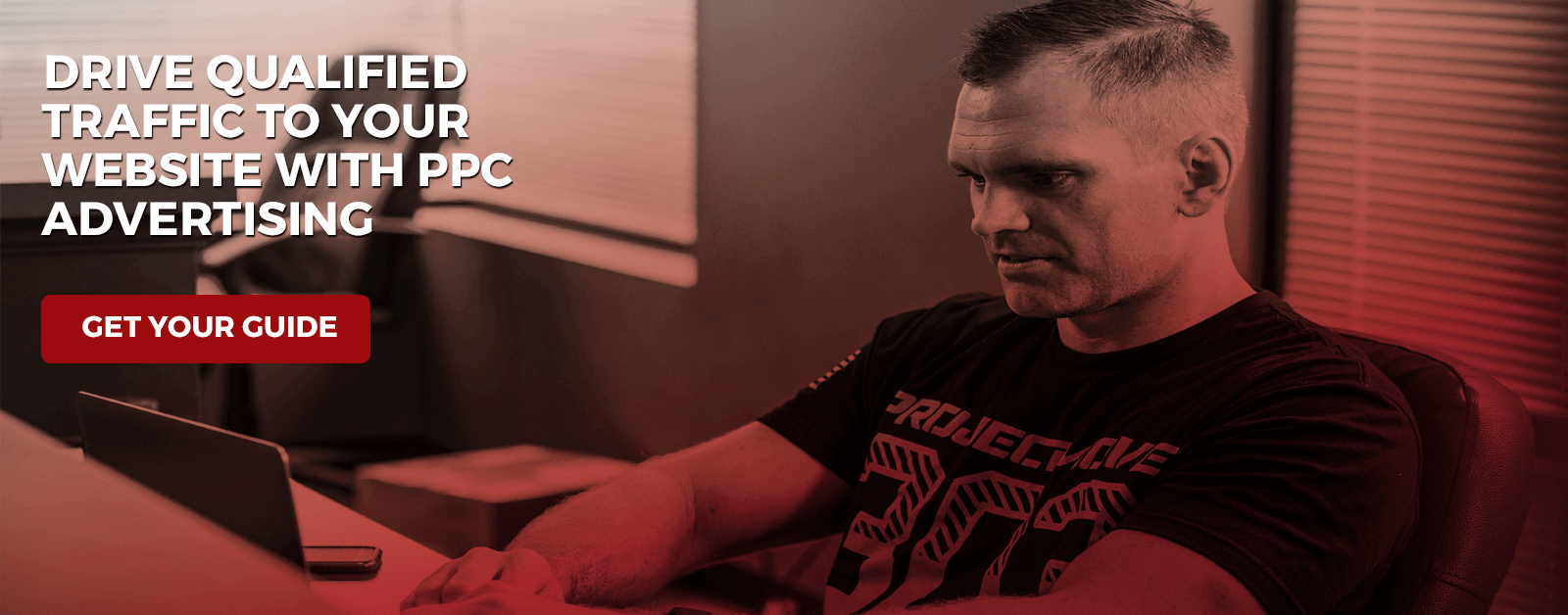Fitness Marketing Tips – Getting Started with AdWords


In last week’s SEM blog series, we introduced Google AdWords Express as the best way to get started with PPC advertising for your fitness business. AdWords Express was made for first-time PPC advertisers, as Google auto-manages the account for you. If you’ve tried out AdWords Express and feel like you’re ready to expand your PPC marketing efforts, this post is for you. Today, we’ll cover two key components of an advertising account within AdWords, keywords and ad groups.
Why Choose Google?
You’ve probably noticed I have only referenced Google AdWords, and there’s a reason for that. Google currently owns 65.4% of the search engine market share, with Microsoft (Bing) coming in at a far second (19.7%). Seeing that well over half of all searches are performed on Google, it’s safe to assume that you can reach the majority of your target market by advertising on Google.
I personally think Google is far more user-friendly and feature-rich than Bing. When starting out with PPC advertising, I highly recommend starting on Google alone. This will require less management time, give you a good idea of what does and does not work and will help you decide how much time you feel comfortable dedicating to updating and maintaining these campaigns. Once you feel comfortable with managing your Google accounts, then you can make the decision on whether or not you want to venture into advertising on Bing as well.
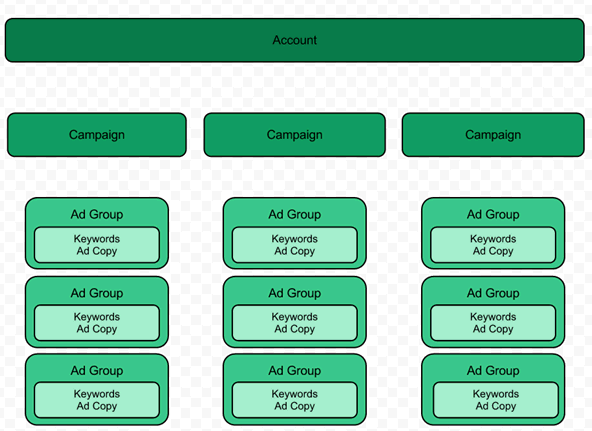
PPC Account Structure
Whether you’re advertising on Google or Bing, the account structure is the same. PPC accounts are organized in the following structure: Campaigns > Ad Groups > Keywords
• Keywords: Keywords are the foundation of your PPC program, as they determine how your ads will be triggered. A strong, relevant keyword list is vital to ensuring you’re getting relevant visitors to you site from this program.
• Ad Groups: Ad groups are the glue that holds your PPC program together. Ad groups consist of both keywords and ads. Ideally, ad groups will contain a list of closely-knit keywords. Having similar keywords placed together in an ad group helps ensure that your ads are extremely relevant to what users are searching on.
• Campaigns: Campaigns are the walls of your program, as everything, including the keywords, ads and ad groups, live within them. Campaigns also are where you’ll set targeting and budgets for your program.
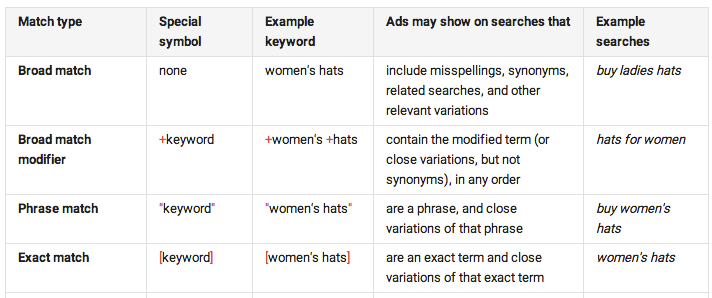
The Key to Keywords
As mentioned above, a strong keyword list will determine whether or not you’ll get clicks from relevant searches, and ultimately, if you will see a decent ROI from your PPC program. Check out our recent blog post for step-by-step instructions on developing a solid keyword list. While this post was developed with SEO in mind, it can easily be applied to developing a PPC keyword list, although you’ll want to be a bit more selective when determining which terms to include in your PPC list.
For SEO, you should truly think of every possible keyword that you could optimize your site for, and then select ones with high relevancy to your content, as well as terms with a strong search volume and low competition. That’s really not the case with PPC, as you won’t want to pay for visits from every single search term that is relevant to your content. With PPC, you want to focus on paying for terms that you think potential customers would be searching for, rather than terms your current customers would be searching on. For example, someone searching on the term, “crossfit gyms in denver” is probably looking for a new gym to join, while someone searching for, “crossfit park hill login” or “crossfit park hill wod”, is likely a current customer who is looking for information relevant to classes. Remember, with PPC, you’re spending money on each and every click you receive (hence why it’s called pay-per-click), so make sure every keyword you choose to bid on will draw traffic to your site that’s worth paying for.
Keyword match types help control which searches will trigger your ad and are assigned to each and every keyword. There are four different match types currently available for use, as seen in the table below from Google. Use match types to determine how broad or specific you want queries to trigger your ads for.
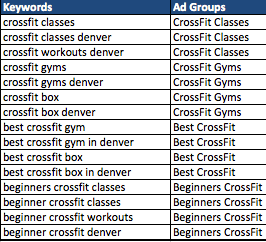
As you can see in the example above, when you set a term to broad, several variations of the term and keyword related to the term will trigger your ads. Broad match is a great option for long tail keywords or terms that have low search volumes. However, broad match can be a poor choice for highly competitive terms and can cause you to spend through your budget quickly. On the other hand, using the exact match option will ensure that your ads only appear when a specific term is searched on. This is a great option for highly competitive terms, but sometimes terms set to this match type have a hard time spending budget. To have a strong performing campaign, you’ll want to have a good mix of broad, phrase and exact match terms.
Don’t Forget Negative Keywords
You’ve inputted your keyword list and set match types, but how else do you ensure that you won’t receive clicks from irrelevant searches? To help reduce click volume from irrelevant searches, you should add negative keywords to your account. Negative keywords are your way of telling Google which specific terms you never want your ads to be triggered by. Using negative keywords can help ensure your ads are being shown to the most relevant searches, and ultimately, reduce wasted costs. I highly recommend that you never launch a campaign without having a solid list of negative keywords.
To help get you started on creating your own negative keyword list, consider the following searches that you probably wouldn’t want to spend money on:
• What You Don’t Offer: Be sure to add negative keywords around classes you don’t offer. If you own a martial arts school that only offers traditional taekwondo classes, you should add negative terms around BJJ, judo and mixed martial arts terms. Although you might not have these terms in your keyword list, terms set to broad match will likely draw clicks from these other types of martial arts searches.
• General Supplies: If you’re a CrossFit box, and most of your CrossFit terms are set to broad match, you’ll likely see irrelevant clicks from various types of CrossFit-related searches, such as “crossfit clothes”, “crossfit shoes”, “crossfit wod journals”, etc. Even if you offer retail items like branded tank tops and supplements, you probably wouldn’t want to bid on these terms or receive clicks from them, as your members are most likely to purchase these items from you. To find irrelevant terms, plug your keyword list into the Google Keyword Planner to see a full list of keywords that Google deems as relevant. Add all irrelevant terms from this list to your negative keyword list.
• Other Cities: When you hear “Denver”, most people think of Colorado, however, there are cities named Denver in Iowa, New York, Missouri, Kentucky and several other states. Be sure to negative match state names if your city exists in other states as well. Also, examine how far your current customers live from your gym or studio. If there are other cities that are outside the vicinity you think people would be willing to drive to attend your business, negative match those city names.
• Searches from Current Members: Does your website have a login? Do you post daily workouts on your site? Members of your fitness business will likely search on these types of terms. To ensure you’re not paying for clicks from current members, try to negative match any searches you think your current members would perform to find information on your site.
• Free: People love searching for free stuff. If you do not offer free classes (ex: a free intro class), be sure to negative match the term “free”. Also, if you charge a premium price at your gym, you should negative match terms like, “cheap”, “inexpensive” and “low cost”.
Organizing Your Keywords into Ad Groups
After you have your keyword list finalized, you’ll need to break the terms into ad groups. Ad groups are where your keywords and ads will live. The key to creating strong ad groups is to ensure they contain very closely related terms. The more similar your terms are, the easier it becomes to write ad text featuring those terms. By featuring keywords within your ads, the better your ads will speak to searchers, and the higher performance you’ll typically see. The best practice for organizing your ad groups is to ensure that they contain around three to 10 terms. If you have more than 10 terms, there’s a good chance they might not be tight knit, and could be broken into more specific ad groups. Here’s a good example of how you could break fairly similar terms into very close-knit ad groups:
That just about covers everything you need to know when setting up keywords and organizing them into ad groups. In our next blog, we’ll cover how to write ads (which will live within your ad groups) and create campaigns with settings relevant to your target market. We’ll also cover some of the basic metrics you need to take into consideration when launching your campaign.
If you’re interested in AdWords but need to improve your website first, we can help. We design websites that integrate with our software and include all the features fitness businesses need to get found online. In addition to a homepage, our responsive website templates include key pages such as about us, programs, schedule, contact us, blog, testimonials and an area for members to login. They also feature lead form to help you ensure you’re getting leads from your advertising dollars. To learn more about how we can help you grow your business with a new website, schedule your demo with one of our Software Specialists.
Ready to get started on developing and implementing your own PPC campaigns to promote your fitness business? Download our handy Guide to PPC Marketing for free today!
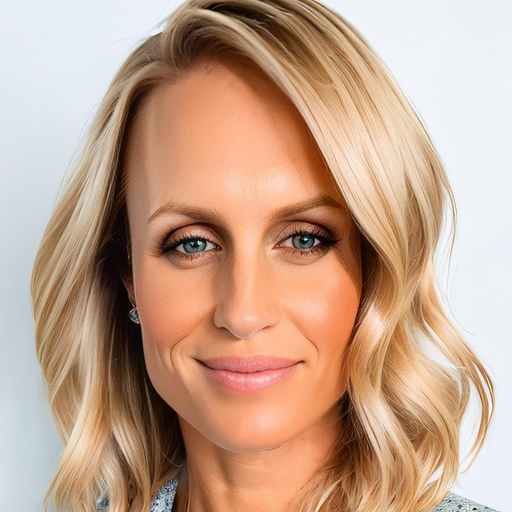
I’m Coach Kelli, a devoted CrossFit gym owner with 15 years of experience managing my facility, along with owning yoga studios and wellness centers. Beyond the fitness world, I have a passion for cooking, cherish moments with my children and family, and find joy in spending time outside. Having experienced the highs and lows, I’m dedicated to leveraging my expertise to help you grow and succeed on your fitness journey.

I’m Coach Kelli, a devoted CrossFit gym owner with 15 years of experience managing my facility, along with owning yoga studios and wellness centers. Beyond the fitness world, I have a passion for cooking, cherish moments with my children and family, and find joy in spending time outside. Having experienced the highs and lows, I’m dedicated to leveraging my expertise to help you grow and succeed on your fitness journey.

